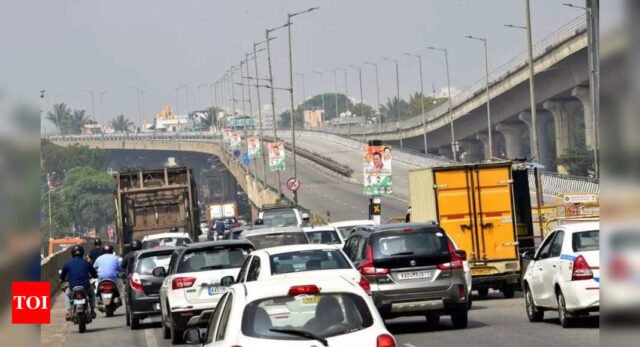Vijayawada: Clearing decade-long hurdles, National Highways Authority of India (NHAI) has completed a six-lane bypass to NH-16 near Chilakaluripet in Palnadu district.
This new bypass will facilitate freight carriers between Chennai and Kolkata to reach their respective destinations without getting stranded in traffic congestion, particularly in Chilakaluripet town.
The Centre spent around 1,000 crore to construct the 16km-long six-lane bypass. Initially, NHAI wanted to widen the existing highway within Chilakaluripet town about a decade ago. However, the proposal was met with resistance from locals, particularly influential industrialists who owned assets close to the NH.
Subsequently, NHAI authorities proposed to take up a bypass to connect the existing national highway on both ends of Chilakaluripet town. Surprisingly, the bypass proposal was also met with resistance, this time from farmers who demanded high compensation for land acquisition.
It took over eight years for the district administration to complete the land acquisition through prolonged negotiations with farmers and clear court litigations for the works to start.
The six-lane bypass has been installed with advanced solar lighting and speed management system, with NHAI setting up a one mega watt capacity solar plant next to the NH.
The solar plant is connected to the power grid so that it can transfer the surplus power after consumption for the highway lighting.
Similarly, a speed governance management system has been installed for the first time on the NH. The speed guns located on the bypass can track overspeeding vehicles and send alerts to local authorities, including the police. Speed display systems have also been set up at regular intervals to caution the drivers.
The bypass commences at Ramachandrapuram village near Martur and ends at Timmapuram village on the outskirts of Chilakaluripet. NHAI spent close to 300 crore for acquisition of land from farmers.
This new bypass will facilitate freight carriers between Chennai and Kolkata to reach their respective destinations without getting stranded in traffic congestion, particularly in Chilakaluripet town.
The Centre spent around 1,000 crore to construct the 16km-long six-lane bypass. Initially, NHAI wanted to widen the existing highway within Chilakaluripet town about a decade ago. However, the proposal was met with resistance from locals, particularly influential industrialists who owned assets close to the NH.
Subsequently, NHAI authorities proposed to take up a bypass to connect the existing national highway on both ends of Chilakaluripet town. Surprisingly, the bypass proposal was also met with resistance, this time from farmers who demanded high compensation for land acquisition.
It took over eight years for the district administration to complete the land acquisition through prolonged negotiations with farmers and clear court litigations for the works to start.
The six-lane bypass has been installed with advanced solar lighting and speed management system, with NHAI setting up a one mega watt capacity solar plant next to the NH.
The solar plant is connected to the power grid so that it can transfer the surplus power after consumption for the highway lighting.
Similarly, a speed governance management system has been installed for the first time on the NH. The speed guns located on the bypass can track overspeeding vehicles and send alerts to local authorities, including the police. Speed display systems have also been set up at regular intervals to caution the drivers.
The bypass commences at Ramachandrapuram village near Martur and ends at Timmapuram village on the outskirts of Chilakaluripet. NHAI spent close to 300 crore for acquisition of land from farmers.







